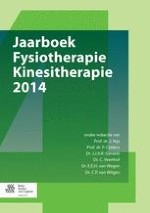Inleiding
Een beroerte is een van de belangrijkste oorzaken van chronische invaliditeit bij volwassenen. Als gevolg van de vergrijzing zal naar verwachting het aantal patiënten met een beroerte in de toekomst toenemen, wat grote sociaal-economische gevolgen heeft (Truelsen, Ekman & Boysen, 2005). Vanwege de verwachte toename van het aantal patiënten en de impact van een beroerte voor de individuele patiënt is het belangrijk om de kwaliteit en doelmatigheid van de zorg verder te verbeteren. De laatste jaren is er een trend zichtbaar van steeds kortere opnames op zogenoemde stroke-units in het ziekenhuis. Al tijdens de eerste dagen na de beroerte moeten daarom keuzes worden gemaakt over het beste revalidatietraject voor de patiënt. Deze keuzes worden in belangrijke mate bepaald door de functionele prognose. Kennis over de functionele prognose draagt bij aan het formuleren van realistischeen haalbare doelstellingen in de zorg, een adequaat verwijsbeleid en de mogelijkheid om al vroeg te kunnen anticiperen op eventuele aanpassingen en/of hulpmiddelen die in een latere fase nodig zijn. Als lid van het multidisciplinaire team op de stroke-unit behoort het tot de taken van de fysiotherapeut om een inschatting te maken van de functionele prognose voor de motorische functies en mede op basis daarvan een adequaat advies te geven aan het multidisciplinaire team.
